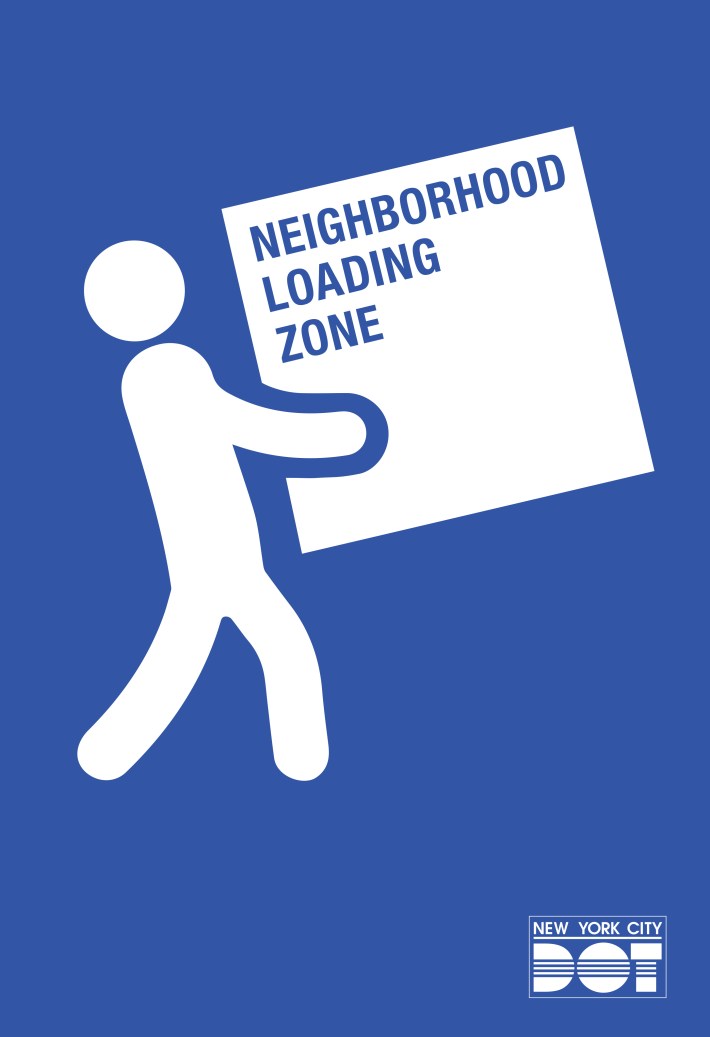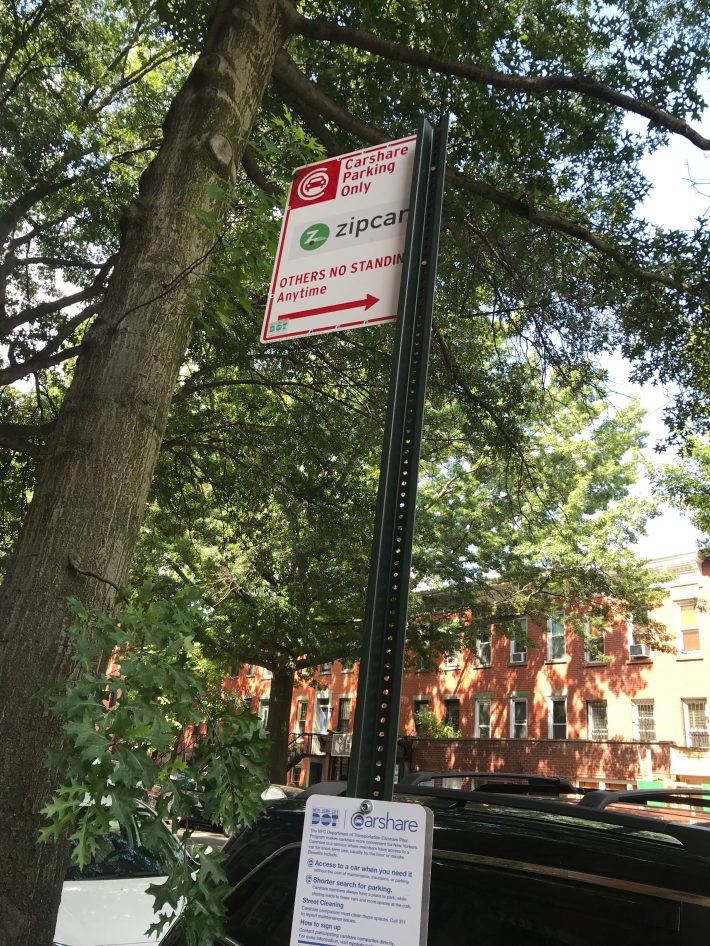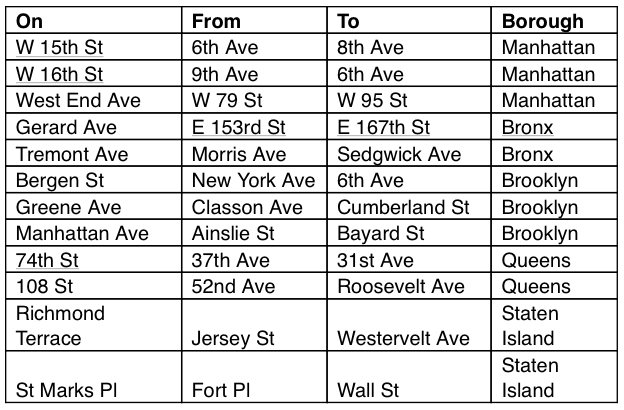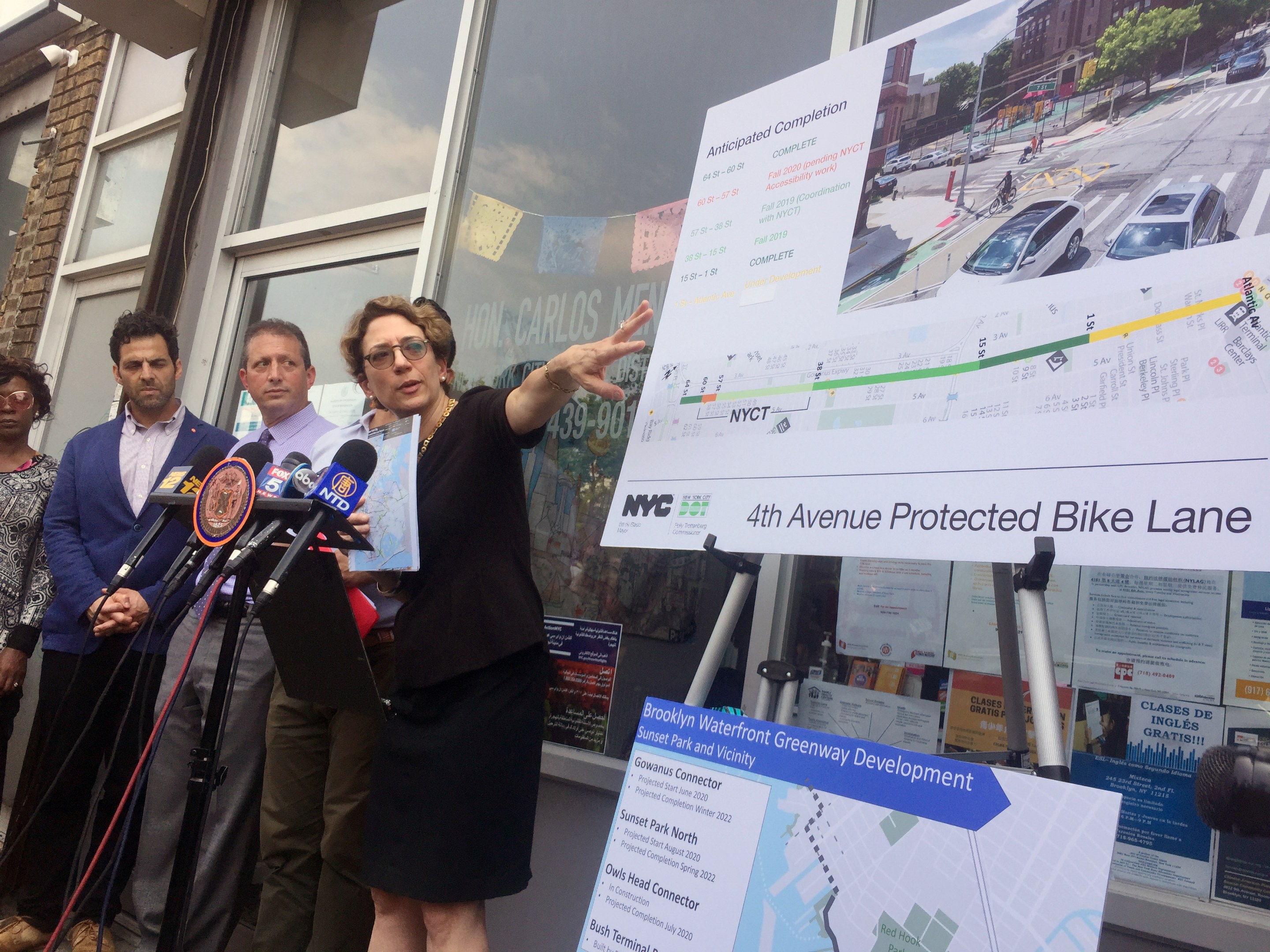Reports of the demise of the Department of Transportation's elimination of parking spaces in a dozen residential neighborhoods to make room for the delivery trucks summoned by all those neighborhood residents have been greatly exaggerated.
DOT Commissioner Polly Trottenberg told Streetsblog that the agency's pilot Neighborhood Loading Zones program — which was assailed by some residents who wrongly believe that the curbside space is set aside for the storage of their automobiles — would continue, though not in Fort Greene, where it received the coldest reception after DOT's quiet rollout last month. (Residents objected to getting tickets for parking in the newly marked "No Parking" zones.)
"Clearly we could have handled this better," Trottenberg said. "I'm the first to admit that this rollout did not go the way it should have — but we only had issues in three neighborhoods, most notably in Fort Greene."

To save the program — which seeks to decongest dozens of residential streets that are clogged and endangered by double-parked delivery trucks — Trottenberg will unveil new signage by Labor Day (left) that will make it more clear to car owners what they are getting in return for roughly 180 fewer free parking spaces.
"We will brand the space in the same way we do for car share," she said. "Initially, we didn’t do the proper messaging to say, 'Hey this is a good program.'”
She also said she will shift the program so that the agency is only working with local elected officials who are on board — a "coalition of the willing," if you will. The unavoidable conclusion? Criticism of the plan by Brooklyn Council Member Laurie Cumbo led to the DOT pullout of Fort Greene — which only means that Cumbo's constituents will suffer from streets being clogged and unsafe.
In addition, some of the residential loading zones in Council Members Francisco Moya's Queens district will be shifted to other roadways in the same neighborhoods. And nine other zones in the project — including on the Upper West Side — will continue as planned.
"I want to do it in neighborhoods that are enthusiastic and want it," she said. "We don’t want a huge battle. We know will have big debates and challenges over expanding bike and bus lanes, but this is like car share. I want it to be in areas that are open to it."
Cumbo's loss is Council Member Antonio Reynoso's gain. The Bushwick official said he was eager to see Trottenberg's blue signs dotting his residential neighborhoods.
"Double-parking makes it dangerous for everyone, pedestrians, cyclists and drivers," he said. "It's also about equity. Thousands of people are ordering items that they want delivered versus protecting a space for a single-person vehicle to be stored. So I’m 100 percent on board. I have three coming to my district and won’t allow them to be challenged."

Reynoso is exactly the kind of council member Trottenberg was referring to at a press conference earlier in the month when she offered the rare admission that her loading zone ambitions were in trouble.
“Some neighborhoods have been embracing it,” she said. “Some neighborhoods, not as much as we would hope. The point of this pilot — as with Citi Bike and car share and more bus lanes and more bike lanes — is the idea that we can use the street space much more efficiently. … Certainly with this loading zone pilot, I won’t lie, we can use some political support. But we are exactly trying to send that message.”

But in her conversation with Streetsblog, Trottenberg made the less rare confession that she objected to some of the recent coverage that the DOT is not acting boldly enough on the root cause of all road evil in this city which is embodied in the loading zone debate: the millions and millions of spaces of free parking. Many outlets — not just Streetsblog — have embraced the notion that free parking is encouraging more car ownership and therefore more driving.
"I’ve been following the coverage this summer and there is a school of thought that city needs to take all these parking spaces away," she said. "To be fair, when you look at a lot of cities that have repurposed parking, they are making huge investments in expanding transit. If we took away parking but did not offer new transit options, that wouldn't work. Congestion pricing will help because it will give the MTA a new source of revenue to expand transit. In 30 years, we've added just a few stops on the West Side and the Upper East Side. We don't have Crossrail like London, for example."
Streetsblog pointed out that removing parking is itself a good thing, whether more transit is added or not.
"[The city] does want to make it tougher to drive, but only when we can offer more mass transit options," she said. "And the Green Wave plan calls for thousands of parking spaces to be removed with big projects such as the Central Park West bike lane."






